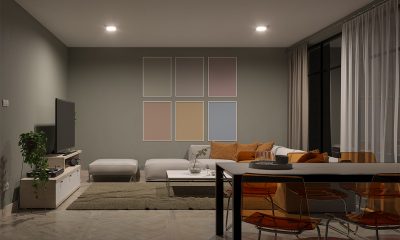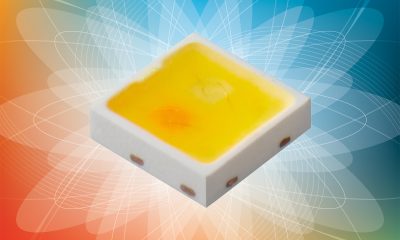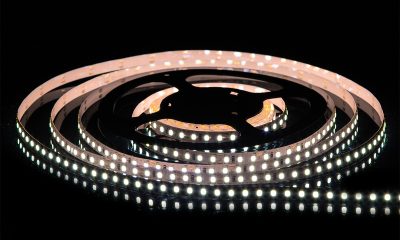What is a circadian lighting system
Circadian lighting systems are ambient or task lights capable of producing biologically effective, dynamic white light that supports the natural biological rhythm to improve health, wellbeing, and performance. Circadian lighting is the core part of the human centric lighting (HCL) concept which goes beyond the basic visual needs of people to take into account the non-visual effects of optical radiation on human psychology and physiology. Unlike the traditional approach to lighting design that merely addresses the visual needs, HCL delivers an optimal balance of visual, emotional and biological benefits of lighting for humans. An HCL implementation brings the dynamics of outdoor ambiances into built environments to achieve positive biological functioning, visual performance and emotional satisfaction, the same way as natural daylight. It enables the creation of light with its spectral composition and intensity aligned with key activities, which contributes favorably to mood, vitality, concentration, productivity and health individually or in some combination.
What is circadian lighting
Circadian lighting is designed to synchronize human circadian rhythms to the 24-hour rhythm of the ambient changes. Circadian rhythms are biological processes generated and regulated by an internal biological clock located in the suprachiasmatic nuclei (SCN), a group of cells contained within the hypothalamus region of the brain. These biological processes repeat at approximately 24-hour intervals and the human biological clock endogenously drives and coordinates the rhythmicity in these processes.
The biological clock located in the SCN of the hypothalamus is the only clock capable of generating self-sustaining, endogenous oscillations and thus it is called master clock or master circadian oscillator. The master clock in turn synchronizes slave clocks in peripheral organs such as the liver, lung, muscle, retina, kidney, and cortex. SCN is linked directly to the retina, allowing the master clock to be entrained to the 24-h light-dark cycle. The retina provides circadian phototransduction through three classes of photoreceptors in the retina: rods, cones, and intrinsically photosensitive retinal ganglion cells (ipRGCs). Circadian phototransduction is the process used by the retina to converts light into electrical signals for the circadian system.
Photoreceptors for circadian phototransduction
Although the classical photoreceptors (i.e., rods and cones) contribute to circadian phototransduction, ipRGCs are central to this process. The ipRGCs form the main neural conduit from the retina to the SCN. They can integrate and transmit photic information via the retino-hypothalamic tract (RHT) to the SCN even without communication with the rods and cones. This photosensitivity is driven by melanopsin, an opsin photopigment composed of an opsin protein and an optical radiation-detecting chromophore. The spectral sensitivity of melanopsin peaks around 480 nm. However, the additional contribution from rods and cones causes a broadening shift of the action spectrum for the SCN, which peaks around 460 nm.
Under the rhythmic radiation of the spectrally sensitive light, human beings have evolved endogenous circadian clocks that are inherently tied to the light cycle of the solar day. The ipRGCs transduce light into neural signals for the SCN and promote synchronization of human circadian rhythms with the daily rhythms in its environment. Environmental time cues can reset this internal clock to ensure that the behavioral and physiological rhythms are appropriately synchronized with the outside word. This synchronization also drives peripheral clocks and allows the SCN to entrain them to an appropriate phase relative to each other.
How important is circadian synchronization
Circadian synchronization is paramount to the efficient and appropriate functioning of the human body. It can directly and indirectly influence neurobehavioral functioning (e.g., sleep/wake cycle) and the neuroendocrine system which regulates the physiological processes of the human body as well as controls secretion of endocrine hormones such as melatonin, serotonin and cortisol.
Melatonin, which is secreted into the blood by the pineal gland at night and under conditions of darkness, is among the best known of these. This hormone is the main internal synchronizer of the peripheral clocks with the SCN and cues the circadian sleep/wake cycle. The light-dark cycle and other external oscillators act as stimuli to the SCN and describe the information to be transmitted by melatonin.
As melatonin travels in the bloodstream throughout the body, it relays information provided by the daylight signals of the SCN about the time of day depending on whether it is being suppressed or secreted. Because the level of melatonin secretion or suppression prompts a variety of physiological reactions, the spectral sensitivity of the SCN is typically measured by acute melatonin suppression by light at night.
Health risks of circadian disruption
Maintaining the sequential and phase-relation ordering of the various biological processes, from the physiological level to the behavioral level, has a vital importance for coordinated function throughout the human body. The circadian disruption between the SCN and the peripheral clocks and internal desynchronization between the various peripheral clocks influence a range of neuroendocrine, neurobehavioral, and therapeutic responses in humans.
- The internal desynchronization affects a variety of biological functions that are related to sleep, alertness, digestion, cell metabolism and proliferation, and physical performance.
- Discrepancies over the long term between the circadian rhythm and the external day/night rhythm can trigger a chain reaction that activates hormonal and other pathways critical to maintaining human health and biological functioning.
- Endocrine hormones are an important component of the circadian system. Disruption of the circadian rhythms of hormone production has been linked to health issues such as immunity, inflammation, tumor growth rates, cognitive function, thyroid function, glucose levels, and bone density.
- Chronic circadian disruption poses a high risk for a range of diseases from diabetes, obesity, reproductive problems, depression, bipolar disorders and seasonal affective disorders to cardiovascular disorders and cancers.
Melatonin
As people living in industrialized societies spend most of their time working and living indoors, they do not experience a strong influence of the natural sequence of day and night. An increasing population is therefore is exposed to the greatest risk of disrupting naturally evolved circadian rhythms and subsequent health effects. Electric LAN (light at night) and electronic displays act as endocrine disruptors by acutely suppressing the nocturnal melatonin release. Melatonin plays a pivotal role in regulating the biological clock. The nocturnal release of melatonin is critical to regenerative growth and also a vital protective mechanism that suppresses the growth of cancer cells in our body. Melatonin secretion, in the absence of biologically effective light, starts to climb around 9 PM, peaks in the middle of the night (around 2 AM), then drops and terminates by 7 AM.
Exposure to blue-rich light at night, however, can suppress over 80% of the normal melatonin release. This level of reduced melatonin is disruptive to restorative sleep throughout the night and can activate the pituitary and the adrenal gland to release cortisol. The cascade of disruptive effects spreads out through the body, causing insulin resistance and diabetic symptoms, impeding the expression of clock genes associated with cancer, weakening the immune system and increasing susceptibility to infections.
Make sense of circadian lighting systems
Circadian lighting systems are created to maintain circadian entrainment through optical radiation that can effectively regulate the ipRGCs’ photosensitivity and control circadian phototransduction. Synchronization/entrainment of the circadian clock to the natural day/night cycle with circadian lighting allows for optimization of daily activities while also minimizing health risks related to the internal and external desynchronization of biological rhythms. Circadian light not only intends to promote a better quality of restorative sleep, it also acts as a stimulus for the human circadian system and enables to improve alertness, vitality, concentration, mood, attention levels, reaction time, muscle strength and coordination, cardiovascular efficiency, happiness, energy levels, and work productivity.
While the absence of short wavelength blue light is critical to maintaining optimal circadian night functions, positive psychological stimulation during daytime often requires exposure to high intensity, blue-enriched light. Thus, bioactive blue light weighted by the spectral sensitivity of the phototransduction mechanisms that stimulate the biological clock is not intrinsically healthy or unhealthy. Maintaining circadian entrainment by biologically effective artificial lighting is a dosage function that depends on the wavelength, amount of exposure, duration of exposure, and time of day.
Spectral engineering
A lighting product developed for circadian entrainment is often translated into a tunable white fixture which allows independent control of both color temperature and intensity of light. White light is a mix of many different wavelengths. Color temperature, as measured in Kelvin, indicates the relative color appearance of a white light source and runs from “warm” to “cool” along the radiation spectrum of light. A low color temperature or a warm color generally corresponds to a relatively low proportion of short-wavelength light (biologically effective blue light) in the visible spectrum. A cool white or high color temperature light source emits more short-wavelength light than long-wavelength light. As the color temperature increases, the proportion of blue light in the visible spectrum typically increases. The same applies to the intensity of light.
A circadian lighting system is capable of delivering the right spectrum and intensity of at the right biological time. This capability was practically impossible before the advent of LED lighting. The LED technology platform enables manipulation of the spectral power distribution (SPD). The light spectrum can be engineered to engage specific human visual and non-visual responses. Instantaneous control over a full range of intensity provides the LEDs the ability to deliver the right amount of spectrally light on demand.
Tunable white lighting
Tunable white circadian lights provide the ability to dynamically tune the spectrum of emitted light. These products often combine warm white LEDs and cool white LEDs in the same module. Color mixing occurs as the light leaves the module. Individual, accurate dimming control of the component LEDs provides a continuously adjustable range of color temperatures between chromaticity points of each CCT LED (e.g., from 1800K to 6500K). The addition of a third color to the warm and cool white LEDs allows adjusting the correlated color temperature (CCT) to closely following the black body locus. The LEDs are dimmed through pulse-width modulation (PWM) or constant current reduction (CCR). The multi-channel LED driver is controlled generally using 0-10 V, DMX, or DALI protocols. Circadian lights can take various forms, including troffer lights, recessed downlights, pendant lights, wall lights, table and floor lamps.













Loading...